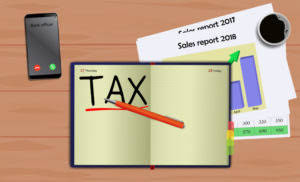
Educators may be able to deduct up to $250 of unreimbursed expenses if they’re single or up to $500 if they’re married and filing a joint tax return with another professional in the education field. These frameworks require that expenses be recorded in the period they are incurred, ensuring that financial what does miscellaneous expenses mean statements accurately reflect the company’s financial status. By adhering to these standards, companies avoid the potential misrepresentation of their financial health, which could occur if miscellaneous expenses were omitted or deferred. Financial management often focuses on significant expenses that are easy to identify and track.

Common Types of Miscellaneous Expenses #
- They are recorded as part of a company’s financial statements, typically under operating expenses.
- Costs incurred for business travel, like lodging, meals, and airfare, often fall into a defined expense category and directly support the business’s operations.
- These officials can deduct work-related expenses incurred in performing their official duties.
- In your general ledger, expenses categories—like cost of goods sold, operating expenses, and so on.
- Automation simplifies this process, ensuring accurate records without the hassle.
Bank revealed that 82% of small business failures are due to poor cash flow management, highlighting the critical need for diligent expense tracking. Multiply this across other https://worldwideslogans.com/top-excel-budget-templates-free-downloads-included/ miscellaneous expenses, and you’re looking at a significant blind spot in your financials. And yes, some bank charges and direct expenses may still qualify as tax-deductible, so it pays to consult an accountant.
Miscellaneous Expenses are Not Start-Up Costs
With a clear understanding of how to record and categorise these costs, the next step is to explore best practices for managing miscellaneous expenses. In the next section, we’ll explore common examples of miscellaneous expenses, giving you a practical guide for recognising these costs. Tracking miscellaneous expenses can reveal patterns that might otherwise go unnoticed. For example, if small office supplies are regularly purchased, it may indicate a need to bulk-buy supplies for cost savings. In this blog, we’ll break down everything you need to know about miscellaneous expenses.
- Effectively managing these varied costs is important for maintaining clear financial oversight for business operations.
- An “ordinary” expense is one that is common and accepted in your industry, while a “necessary” expense is helpful and appropriate for your business.
- While these expenses may be irregular or infrequent, they still play a vital role in daily operations.
- It can help them figure out where they’re spending too much and make the changes they need to make to keep their budget in good shape.
Tax-Deductible Miscellaneous Expenses
The aim is to ensure that all business-related outlays are accounted for, even if they are individually small or infrequent, contributing to a comprehensive financial picture. The concept of “miscellaneous” functions as a “catch-all” category for expenditures that might otherwise complicate a company’s detailed chart of accounts. This classification is applied to minor or infrequent expenses that do not warrant their own separate, dedicated accounting line.

Sundry Expense vs. General Expense

These additional costs are often small and can vary significantly from month to month, depending on Bookkeeping vs. Accounting the needs of the business. Working with an adviser may come with potential downsides, such as payment of fees (which will reduce returns). There are no guarantees that working with an adviser will yield positive returns.

